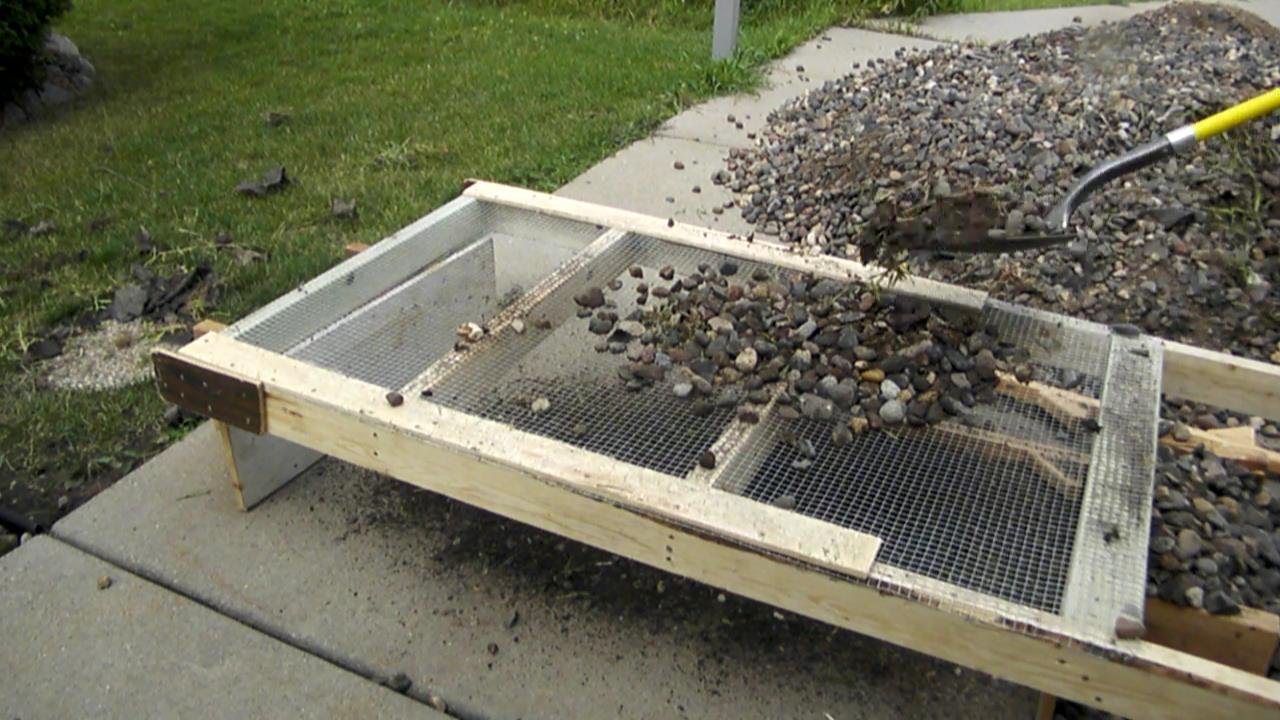Home>Garden Design>Planning Your Garden>How To Write A Landscaping Contract


Planning Your Garden
How To Write A Landscaping Contract
Modified: January 22, 2024
Learn how to plan your garden and write a landscaping contract that covers all the essential details. Get expert tips and ensure a successful gardening project.
(Many of the links in this article redirect to a specific reviewed product. Your purchase of these products through affiliate links helps to generate commission for Chicagolandgardening.com, at no extra cost. Learn more)
Table of Contents
- Introduction
- Understanding the Basics of a Landscaping Contract
- Key Components of a Landscaping Contract
- Step-by-Step Guide to Writing a Landscaping Contract
- Tips for Writing an Effective Landscaping Contract
- Important Considerations in a Landscaping Contract
- Sample Landscaping Contract Template
- Conclusion
Introduction
Welcome to the world of landscaping! Whether you’re a homeowner looking to transform your outdoor space or a professional landscaper ready to embark on a new project, one of the essential tools you’ll need is a landscaping contract. This legally binding agreement serves as a roadmap for both parties involved, outlining the scope of work, timelines, payment terms, and other crucial details.
Writing a landscaping contract may seem like a daunting task, but fear not! In this comprehensive guide, we’ll walk you through the basics of a landscaping contract, its key components, and offer step-by-step instructions on how to create an effective contract. We’ll also provide you with some valuable tips and considerations to ensure you cover all the essential aspects.
A well-crafted landscaping contract not only protects both parties but also sets clear expectations and promotes a smooth working relationship. It outlines the responsibilities of the landscaper and the client, specifies the project deliverables, and establishes a fair and transparent framework for all commercial aspects. Whether you’re a seasoned landscaper or new to the industry, this guide will equip you with the knowledge and tools to create a solid landscaping contract that will keep your project on track and safeguard your interests.
So, let’s dive in and explore the world of landscaping contracts together!
Understanding the Basics of a Landscaping Contract
A landscaping contract is a legal agreement between a client and a landscaper that outlines the terms and conditions of a landscaping project. This document serves as a blueprint for the project, detailing the scope of work, project timelines, payment terms, and any other pertinent information.
Before diving into the nitty-gritty details of writing a landscaping contract, it’s important to understand the key components that make up this important document:
- Parties Involved: The contract should clearly state the names and contact information of both the client and the landscaper. This ensures that both parties can easily communicate and resolve any issues that may arise during the course of the project.
- Scope of Work: This section outlines the specific tasks and services that the landscaper will provide. It is important to be as detailed as possible to avoid any misunderstandings or disputes later on. This may include the type of landscaping services, the specific areas of the property to be worked on, and any special requirements or materials.
- Project Timeline: A well-defined project timeline helps both parties stay on track and ensures that the work is completed within the agreed-upon timeframe. This section should include the start and end dates of the project, as well as any milestones or deadlines for specific tasks.
- Payment Terms: The payment terms in a landscaping contract specify how and when the client will compensate the landscaper for their services. This includes the total contract amount, any deposits or upfront payments required, and the schedule of payment installments.
- Change Orders: Sometimes, changes need to be made to the original scope of work during the course of the project. A good landscaping contract should outline the process for approving and implementing these changes, including any associated costs or adjustments to the timeline.
- Termination Clause: In the event that either party needs to end the contract prematurely, a termination clause outlines the conditions and procedures for termination. This protects both parties and helps to minimize any potential financial or legal repercussions.
By understanding these key components, you can begin to draft a landscaping contract that effectively addresses the needs and concerns of both the client and the landscaper. In the next section, we will guide you through the step-by-step process of writing a successful landscaping contract.
Key Components of a Landscaping Contract
When creating a landscaping contract, it’s important to include certain key components to ensure that all aspects of the project are properly addressed. These components provide clarity, establish expectations, and protect the interests of both the client and the landscaper. Let’s explore the essential elements that every landscaping contract should include:
- Project Description: Clearly define the scope of work and describe the specific tasks and services that will be provided. This includes details such as the types of landscaping services, the areas of the property to be worked on, and any materials or equipment that will be used.
- Timeline: It’s crucial to establish a timeline for the project, including the start and end dates, as well as any major milestones or deadlines. This will help both parties stay on track and ensure that the project is completed in a timely manner.
- Payment Terms: Clearly outline the total cost of the project and specify the payment terms. This includes any upfront deposits or down payments, as well as the schedule for future payments. Be sure to include any penalties or late fees for delayed or missed payments.
- Insurance and Liability: Specify the insurance requirements for both the client and the landscaper. This includes liability insurance to protect against accidents or damages that may occur during the project. It’s important to outline who is responsible for obtaining and maintaining insurance coverage.
- Change Orders: Anticipate the possibility of changes or additions to the original scope of work. Include a clear process for approving and implementing change orders, including the associated costs and any adjustments to the timeline.
- Warranties and Guarantees: Clearly state any warranties or guarantees provided by the landscaper for the work performed. This includes warranties on plant survival, equipment installation, or any other specific aspects of the project.
- Dispute Resolution: Include provisions for addressing disputes or conflicts that may arise during the course of the project. This may include mediation or arbitration processes to resolve conflicts before taking legal action.
- Termination Clause: Define the conditions and procedures for terminating the contract. This allows for a smooth and fair termination in case either party wishes to end the agreement before the project is completed.
These key components form the foundation of a comprehensive landscaping contract. By including them in your contract, you ensure that all parties involved are on the same page and that the project progresses smoothly. In the next section, we will provide you with a step-by-step guide to help you write your own landscaping contract.
Step-by-Step Guide to Writing a Landscaping Contract
Writing a landscaping contract may seem like a daunting task, but with a step-by-step approach, you can create a comprehensive and effective agreement. Follow these guidelines to write your own landscaping contract:
- Start with a Header: Begin by adding a header that includes the title “Landscaping Contract” along with the names and contact information of both the client and the landscaper.
- Provide a Project Overview: Start the contract with a brief description of the project. Include details such as the start date, the expected completion date, and a general description of the work to be done.
- Define the Scope of Work: Clearly outline the specific tasks and services that the landscaper will provide. Be detailed in describing the type of landscaping work, materials to be used, and any special considerations or requirements.
- Include a Timeline: Establish a timeline for the project, including the start and end dates, as well as any milestones or deadlines. This helps manage expectations and ensures that the project stays on schedule.
- Address Payment Terms: Specify the total contract amount, including any upfront deposits or down payments. Outline the payment schedule, indicating when payments are due and any penalties for late payments or non-payment.
- Discuss Change Orders: Anticipate the possibility of changes to the original scope of work. Outline the process for approving and implementing change orders, including any associated costs or adjustments to the timeline.
- Include Insurance and Liability: Clearly state the insurance requirements for both parties. Specify who is responsible for obtaining and maintaining liability insurance coverage to protect against accidents or damages that may occur during the project.
- Address Warranties and Guarantees: State any warranties or guarantees provided by the landscaper, such as plant survival or equipment installation. Be clear about the duration and terms of these warranties.
- Outline Dispute Resolution: Include a section on how disputes or conflicts will be handled. This may involve mediation or arbitration processes to resolve conflicts before resorting to legal action.
- Define Termination Conditions: Clearly state the conditions and procedures for terminating the contract. This provides an understanding of how the agreement can be ended by either party before the project is completed.
Remember to use clear and concise language throughout the contract, and consider seeking legal advice to ensure that your contract complies with local laws and regulations. Finally, both parties should carefully review and sign the contract to make it legally binding.
By following this step-by-step guide, you can create a thorough and well-structured landscaping contract that sets clear expectations for both the client and the landscaper. Keep reading for some additional tips to make your landscaping contract as effective as possible.
Tips for Writing an Effective Landscaping Contract
When it comes to writing a landscaping contract, a well-crafted document can make all the difference in ensuring a successful and smooth project. Here are some valuable tips to consider when writing your landscaping contract:
- Be Clear and Specific: Use clear and concise language to describe the scope of work, payment terms, and any other important details. Avoid ambiguous or vague language that could lead to confusion or disputes down the line.
- Include a Detailed Scope of Work: Provide a comprehensive description of the tasks and services that will be performed. Specify the materials to be used, the specific areas of the property to be worked on, and any unique or special requirements.
- Specify Payment Terms and Schedule: Clearly outline the total contract amount, deposit requirements, and the schedule for future payments. Include any penalties for late payments or non-payment to ensure timely compensation.
- Consider Insurance and Liability: Address the insurance requirements for both the client and the landscaper. Specify who is responsible for obtaining and maintaining liability insurance coverage to protect against any accidents or damages that may occur during the project.
- Include a Change Order Clause: Anticipate the possibility of changes to the original scope of work and outline a clear process for approving and implementing change orders. Specify any associated costs or adjustments to the timeline to avoid misunderstandings.
- Establish Clear Communication Channels: Provide contact information for both parties to ensure effective and timely communication throughout the project. This includes phone numbers, email addresses, and any preferred methods of communication.
- Address Warranties and Guarantees: Clearly state any warranties or guarantees provided by the landscaper for the work performed. Specify the duration and terms of these warranties to provide assurance to the client.
- Consider Local Laws and Regulations: Familiarize yourself with local laws and regulations that may impact your contract. Make sure your contract is compliant and seek legal advice if necessary to ensure its validity.
- Include a Dispute Resolution Clause: Establish a process for resolving disputes or conflicts that may arise during the project. Consider including mediation or arbitration procedures to resolve issues before resorting to legal action.
- Seek Legal Advice: If you’re unsure about any aspect of writing your landscaping contract, it’s always wise to consult with a legal professional. They can provide guidance and ensure that your contract is legally sound.
By incorporating these tips into your landscaping contract, you can create a comprehensive and effective document that protects your interests and sets clear expectations for both parties involved.
Now that you have a solid understanding of what to include and some helpful tips, let’s move on to discussing some important considerations to keep in mind when creating your landscaping contract.
Important Considerations in a Landscaping Contract
When writing a landscaping contract, it’s crucial to consider various factors to ensure that all aspects of the project are properly addressed and that both the client and the landscaper are protected. Here are some important considerations to keep in mind:
- Local Regulations: Research and comply with any local regulations or permits required for landscaping projects in the area. Ensure that your contract and project meet all necessary legal requirements.
- Property Boundaries: Determine and clearly define the property boundaries where the landscaping work will take place, to avoid any disputes or misunderstandings.
- Environmental Factors: Consider any environmental factors that may impact the project, such as soil conditions, climate, and local plants or wildlife. Take them into account when crafting the contract.
- Weather Delays: Account for potential weather delays and their potential impact on the project timeline. Include provisions in the contract for how weather-related delays will be handled and any adjustments to deadlines or milestones.
- Permits and Utility Lines: Clarify who is responsible for obtaining any required permits for the project. Also, discuss the location of utility lines and ensure they are properly marked to avoid any accidents or damages during the landscaping process.
- Materials and Equipment: Clearly specify the materials and equipment that will be used in the project. Include details such as brand specifications, quality standards, and any warranties provided by the manufacturer.
- Cleanup and Restoration: Outline the responsibilities for cleanup and restoration of the work area once the project is completed. Specify any expectations for removing debris, replanting, or restoring the property to its original condition.
- Confidentiality and Nondisclosure: If the project involves sensitive information or proprietary design, include confidentiality and nondisclosure provisions in the contract to protect intellectual property.
- Client Responsibilities: Clearly state any responsibilities that the client must fulfill for the project, such as providing access to the property, ensuring utilities are functioning, or obtaining necessary permissions.
- Dispute Resolution Mechanism: Establish a clear process for addressing disputes that may arise during the project. Consider incorporating alternative dispute resolution methods such as mediation or arbitration, which can help resolve conflicts more efficiently.
By taking these important considerations into account, you can ensure that your landscaping contract comprehensively covers all aspects of the project, mitigates potential risks, and fosters a transparent and successful working relationship with your client.
Now that we’ve covered the essential components, tips, and considerations of a landscaping contract, let’s move on to providing you with a sample landscaping contract template to guide you in creating your own.
Sample Landscaping Contract Template
Below is a sample landscaping contract template that you can use as a starting point for creating your own contract. It covers key components and can be customized to fit the specific needs of your project:
Landscaping Contract
This Landscaping Contract (the “Contract”) is entered into between [Client Name] (the “Client”) and [Landscaper Name] (the “Landscaper”) on [Date].
Project Description
The Landscaper agrees to provide landscaping services to the Client at the following property:
- Property Address: [Address]
Scope of Work
The Landscaper agrees to perform the following tasks as part of the landscaping project:
- [Task 1]
- [Task 2]
- [Task 3]
Timeline
The project will commence on [Start Date] and is expected to be completed by [End Date]. Both parties will agree upon specific milestones and deadlines throughout the project timeline.
Payment Terms
The total cost of the landscaping project is [Total Amount]. Payment shall be made in the following manner:
- Deposit: [Deposit Amount] due on [Date]
- Progress Payments: [Payment Amount] due on [Date], [Payment Amount] due on [Date], and final payment of [Final Payment Amount] due upon completion of the project.
- Payment Method: [Accepted Payment Methods]
Insurance and Liability
The Landscaper agrees to carry appropriate liability insurance to cover any damages or accidents that may occur during the project. The Client agrees to hold harmless the Landscaper from any claims or liability related to the landscaping work.
Change Orders
Change orders may arise during the course of the project. Any changes to the scope of work must be agreed upon in writing by both parties. The Landscaper will provide written documentation outlining the cost and timeline adjustments associated with the change orders.
Warranties and Guarantees
The Landscaper provides a [Warranty or Guarantee] for a period of [Duration], subject to proper maintenance and care by the Client. This warranty covers [Specific Aspects of the Landscaping Work].
Dispute Resolution
Any disputes or disagreements that arise during the project will be resolved through mediation, followed by arbitration if necessary. Both parties agree to work in good faith to reach an amicable resolution.
Termination Clause
Either party may terminate this Contract with written notice if an agreement cannot be reached regarding a dispute or if there is a breach of the terms outlined within the Contract.
Both parties acknowledge that they have read, understood, and agree to the terms of this Landscaping Contract.
_______________________ ________________________
[Client Name], Client [Landscaper Name], Landscaper
Date: [Date]
This is just a sample landscaping contract template. It is important to tailor this template to fit the specific needs and requirements of your landscaping project. Seek legal advice to ensure the legality and enforceability of your contract.
Now that you have a sample contract template, you can use it as a starting point and customize it according to the specifics of your project and the needs of both parties.
Conclusion
Writing a landscaping contract is a crucial step in any landscaping project, whether you’re a homeowner or a professional landscaper. A well-crafted contract not only sets clear expectations and protects both parties, but also serves as a roadmap for the project, ensuring its success. In this comprehensive guide, we have covered the basics of a landscaping contract, its key components, and provided a step-by-step guide to help you create your own contract.
We discussed the importance of understanding the key components of a landscaping contract, such as parties involved, scope of work, project timeline, payment terms, change orders, insurance and liability, warranties and guarantees, and dispute resolution mechanisms. By addressing these components in your contract, you can ensure transparency, mitigate risks, and foster a successful working relationship.
Additionally, we provided valuable tips for writing an effective landscaping contract, including being clear and specific, including a detailed scope of work, addressing payment terms, considering insurance and liability, establishing clear communication channels, and seeking legal advice when needed. These tips will help you create a well-crafted and comprehensive contract that protects your interests.
Moreover, we highlighted important considerations to keep in mind when writing a landscaping contract, such as local regulations, property boundaries, environmental factors, weather delays, permits and utility lines, materials and equipment, cleanup and restoration, confidentiality and nondisclosure, client responsibilities, and dispute resolution mechanisms.
We also provided you with a sample landscaping contract template that you can customize to fit the specific needs of your project. This template serves as a starting point and can be modified to include the necessary details and terms agreed upon by both parties.
Remember, it’s essential to review and revise your landscaping contract as needed and seek legal advice to ensure its legality and enforceability. A well-written and thorough contract will protect both parties and facilitate a successful landscaping project.
With this guide, you are now equipped with the knowledge and tools to confidently write your own landscaping contract. So, go ahead and embark on your landscaping project, knowing that you have a solid agreement in place to guide you every step of the way!










